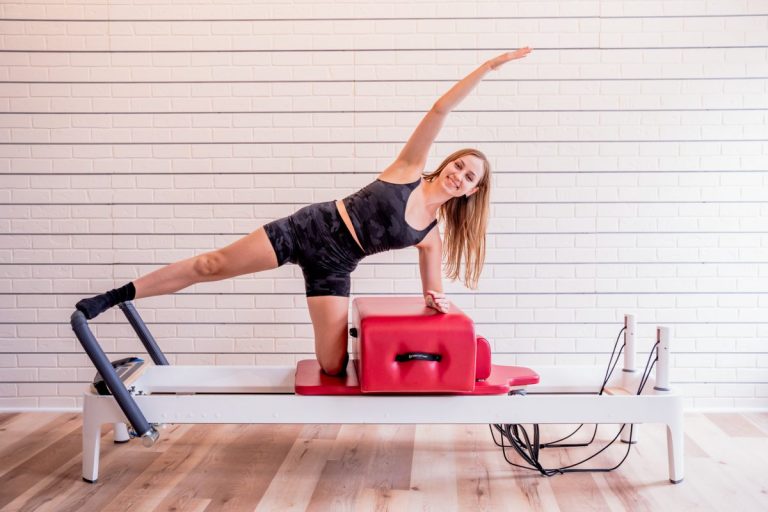Home workouts have become more popular than ever, especially with the global shift towards fitness at home. Whether it’s due to convenience, affordability, or personal preference, more people are realizing the benefits of exercising in the comfort of their own space. However, with the rise of home workouts has come a flurry of misinformation, myths, and misconceptions that can confuse even seasoned fitness enthusiasts.
In this article, we will debunk some of the most common myths about home workouts, offering clarity on how to effectively achieve your fitness goals without stepping foot in a gym.
Myth 1: Home Workouts Aren’t Effective
One of the most pervasive myths about home workouts is that they don’t provide the same results as gym-based workouts. People often assume that without access to specialized equipment like weights, machines, and resistance bands, they won’t be able to get a proper workout. The truth, however, is quite the opposite.
The Reality: Home workouts can be incredibly effective, and the results depend more on consistency, intensity, and the exercises you choose rather than the equipment you use. Bodyweight exercises like squats, lunges, push-ups, and planks can target multiple muscle groups and build strength, endurance, and flexibility. Additionally, if you prefer using resistance, there are countless low-cost alternatives such as dumbbells, kettlebells, resistance bands, or even household items like water bottles or backpacks filled with books.
Scientific Perspective: Research from the American Council on Exercise shows that bodyweight exercises are just as effective as weight training for improving strength and overall fitness. These exercises help build functional strength that can improve your daily activities, while also reducing the risk of injury.
Myth 2: You Need Expensive Equipment for a Good Workout
It’s easy to assume that in order to get a high-quality workout at home, you need to invest in fancy equipment like treadmills, ellipticals, or state-of-the-art weight sets. While these items can enhance your workout experience, they are by no means essential for achieving fitness goals.
The Reality: A solid workout can be done with little to no equipment. Bodyweight exercises, yoga, and Pilates are great examples of routines that require minimal or no equipment at all. Even if you prefer resistance training, a pair of dumbbells or resistance bands are often enough to provide a challenging workout. The key to effective training is how you structure your routine and progressively challenge your body, not the price tag of your equipment.
Scientific Perspective: According to a study published in the Journal of Strength and Conditioning Research, bodyweight training can significantly improve muscle strength and endurance. In fact, the study found that exercises like push-ups and squats can yield comparable strength gains to those achieved with traditional weightlifting.
Myth 3: Home Workouts Are Only for Beginners
Some people believe that home workouts are only suitable for beginners or those looking for a light workout. They assume that more advanced fitness levels require the equipment and resources that gyms provide. However, this is far from the case.
The Reality: Home workouts can be tailored to any fitness level, from beginners to seasoned athletes. Advanced bodyweight exercises, such as pistol squats, handstand push-ups, or one-arm push-ups, can challenge even the most experienced fitness enthusiasts. Moreover, you can increase the difficulty of your workouts by adjusting the number of sets, reps, and rest periods, or incorporating variations like plyometrics (jumping exercises) and circuit training.
Scientific Perspective: A study from the European Journal of Applied Physiology shows that high-intensity interval training (HIIT) and other advanced workout strategies can be done at home and lead to significant improvements in cardiovascular fitness, strength, and fat loss. The intensity, rather than the location of the workout, is what truly determines its effectiveness.
Myth 4: You Need to Work Out for Hours to See Results
Another myth is that long, drawn-out workout sessions are the only way to see progress. Many people think they need to dedicate at least an hour or more to exercise in order for it to be effective. This often leads to burnout, frustration, and ultimately, giving up.
The Reality: Shorter, more focused workouts can be just as effective as longer sessions, especially when using high-intensity techniques like HIIT. In fact, research has shown that even 20 to 30 minutes of intense exercise, performed a few times a week, can significantly improve cardiovascular health, muscle strength, and fat loss. The quality of your workout is far more important than the duration.
Scientific Perspective: A study published in The American Journal of Physiology found that 20-30 minute HIIT sessions can be just as beneficial for fat loss and cardiovascular health as longer steady-state cardio workouts. The short bursts of intense activity followed by brief rest periods help boost metabolism and burn fat more efficiently.
Myth 5: Home Workouts Can’t Help You Lose Weight
There’s a misconception that if you’re not running on a treadmill or using heavy gym machines, you won’t burn enough calories to lose weight. This myth stems from the belief that only high-impact cardio or gym machines can create the calorie deficit needed for weight loss.
The Reality: Home workouts can absolutely contribute to weight loss. In fact, a combination of strength training and cardiovascular exercises at home can help you burn calories, build muscle, and increase your metabolism. High-intensity interval training (HIIT) and circuit training, for example, are excellent ways to burn fat and improve overall fitness, all within the confines of your home.
Scientific Perspective: According to a study published in the Journal of Obesity, both strength training and cardiovascular exercise (including home-based HIIT) can help with weight loss and fat reduction. The research highlights that strength training builds muscle, which increases your resting metabolic rate, making it easier to burn calories even when not exercising.
Myth 6: You Can’t Get a Full-Body Workout at Home
Some individuals may think that to achieve a full-body workout, they need to be at a gym with access to a wide range of machines and equipment. The truth is that with a little creativity, a full-body workout can easily be performed at home, using only bodyweight exercises or basic equipment like dumbbells or resistance bands.
The Reality: Full-body workouts aim to target all major muscle groups in one session. With exercises like squats, lunges, push-ups, planks, and burpees, you can work your legs, core, and upper body without the need for specialized gym equipment. Moreover, adding compound movements such as deadlifts or kettlebell swings (if you have access to weights) can increase the challenge and effectiveness of your home workouts.
Scientific Perspective: Research published in The International Journal of Exercise Science found that full-body workouts using bodyweight exercises can significantly improve muscle strength, endurance, and overall fitness. Full-body routines also tend to be time-efficient, helping you achieve optimal results in less time.
Myth 7: You Don’t Need to Warm Up or Cool Down at Home
Since home workouts tend to be shorter and less intense than traditional gym sessions, some people may skip important steps like warming up and cooling down. This can lead to increased risk of injury and delayed recovery.
The Reality: Warming up and cooling down are essential components of any workout, whether you’re at home or the gym. A proper warm-up prepares your muscles for exercise, increases circulation, and reduces the risk of injury. Similarly, cooling down and stretching after a workout help your muscles recover, prevent stiffness, and improve flexibility.
Scientific Perspective: A study in The Journal of Sports Science and Medicine found that warming up before exercise reduces the risk of muscle strain and injury. Similarly, cooling down helps lower heart rate gradually and reduces post-workout soreness.
Conclusion: Embrace the Flexibility of Home Workouts
Home workouts are a convenient, effective, and affordable way to stay fit, regardless of your fitness level. By dispelling these common myths, it’s clear that you don’t need expensive equipment, long sessions, or a gym membership to achieve your fitness goals. Focus on the quality of your workouts, the intensity, and consistency, and you’ll find that home-based fitness can be just as rewarding as any gym session. Whether you’re aiming to lose weight, build muscle, or simply maintain your health, home workouts offer a flexible and accessible solution.















